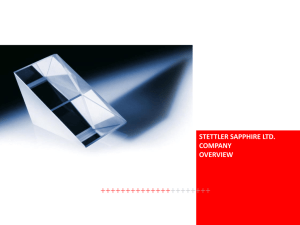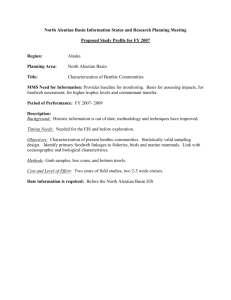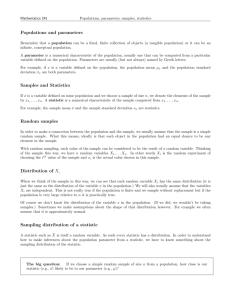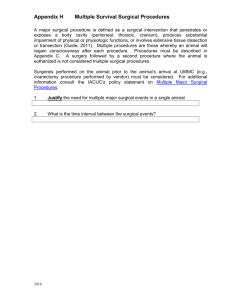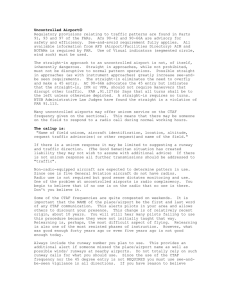Chi Square Problem Set 2
advertisement
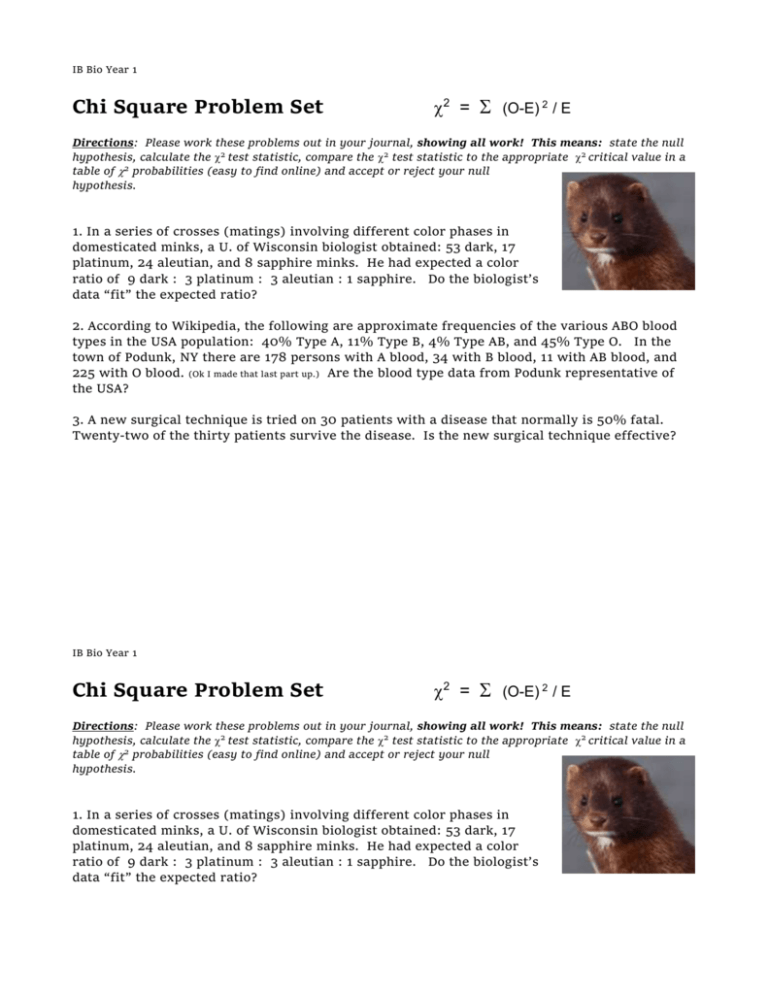
IB Bio Year 1 Chi Square Problem Set 2 = (O-E) 2 / E Directions: Please work these problems out in your journal, showing all work! This means: state the null hypothesis, calculate the 2 test statistic, compare the 2 test statistic to the appropriate 2 critical value in a table of 2 probabilities (easy to find online) and accept or reject your null hypothesis. 1. In a series of crosses (matings) involving different color phases in domesticated minks, a U. of Wisconsin biologist obtained: 53 dark, 17 platinum, 24 aleutian, and 8 sapphire minks. He had expected a color ratio of 9 dark : 3 platinum : 3 aleutian : 1 sapphire. Do the biologist’s data “fit” the expected ratio? 2. According to Wikipedia, the following are approximate frequencies of the various ABO blood types in the USA population: 40% Type A, 11% Type B, 4% Type AB, and 45% Type O. In the town of Podunk, NY there are 178 persons with A blood, 34 with B blood, 11 with AB blood, and 225 with O blood. (Ok I made that last part up.) Are the blood type data from Podunk representative of the USA? 3. A new surgical technique is tried on 30 patients with a disease that normally is 50% fatal. Twenty-two of the thirty patients survive the disease. Is the new surgical technique effective? IB Bio Year 1 Chi Square Problem Set 2 = (O-E) 2 / E Directions: Please work these problems out in your journal, showing all work! This means: state the null hypothesis, calculate the 2 test statistic, compare the 2 test statistic to the appropriate 2 critical value in a table of 2 probabilities (easy to find online) and accept or reject your null hypothesis. 1. In a series of crosses (matings) involving different color phases in domesticated minks, a U. of Wisconsin biologist obtained: 53 dark, 17 platinum, 24 aleutian, and 8 sapphire minks. He had expected a color ratio of 9 dark : 3 platinum : 3 aleutian : 1 sapphire. Do the biologist’s data “fit” the expected ratio? 2. According to Wikipedia, the following are approximate frequencies of the various ABO blood types in the USA population: 40% Type A, 11% Type B, 4% Type AB, and 45% Type O. In the town of Podunk, NY there are 178 persons with A blood, 34 with B blood, 11 with AB blood, and 225 with O blood. (Ok I made that last part up.) Are the blood type data from Podunk representative of the USA? 3. A new surgical technique is tried on 30 patients with a disease that normally is 50% fatal. Twenty-two of the thirty patients survive the disease. Is the new surgical technique effective?
